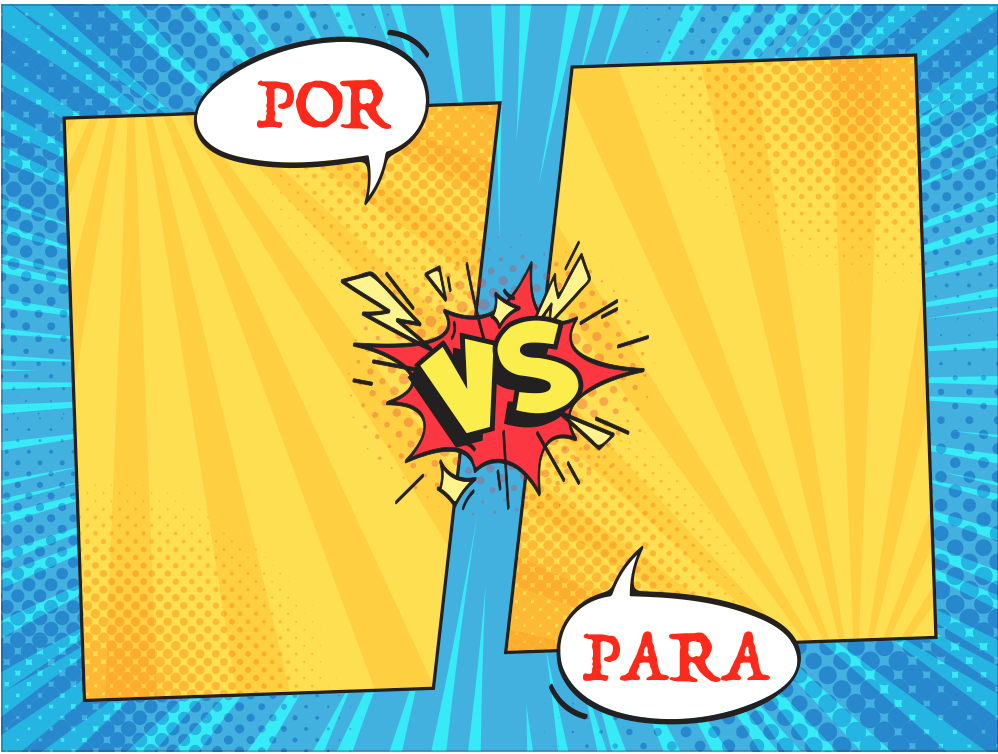This Medical Spanish lesson teaches you 7 Medical Spanish uses of PARA in Spanish: ¿Para qué sirve PARA? 🙂
Last week, we learned how to use POR, so now it’s time to learn how to use PARA in Spanish in the medical setting, so that you can speak confidently with your Spanish speaking patients.
In this medical Spanish lesson you will learn:
- 7 Medical Spanish uses for PARA in Spanish
- An acronym which helps you to remember these uses of PARA
- As I did last week, I sing you an amazing song to reinforce this knowledge 😀
- Finally, I give you a lot of examples in the clinical context.
Here is the 7 Medical Spanish uses of PARA in Spanish that I taught to the Facebook group:
Subscribe to our YouTube Channel to see all of our lessons and get the latest videos right away!
The Meanings of PARA / Los Significados de PARA
- For “use”
- In order to
- So that
- For him/her
- By __ time
- Work for
- To / toward
Some Examples / Unos ejemplos
An Acronym / Un acrónimo: PERFECT
We have an acronym for PARA, so that you will be able to remember the seven uses of PARA in Spanish in the medical setting 🙂
P: Purpose (intended use of something)
If you want to explain what is the purpose of doing something, then you need to use PARA.
| Spanish | English |
| Nosotros le hacemos radiografía para ver los huesos | We do an x-ray in order to see the bones |
| La asociada médica le examina para diagnosticarle | The PA examines you in order to diagnose you |
Note: Whenever you use PARA with a verb, the verb is not going to be conjugated. PARA in this case works like most prepositions (de, a, por, etc.). , so after them the verb appears in the infinitive form.
Additionally, the “le” before the verb and also added to the verb, refers to “usted” (you – formal) in this case, but it also refers to “él” (he) or “ella” (she), so it is an indirect object. The rule to follow for positioning this “le” before the verb or attached at the end of it is simple:
- In most cases, both direct objects or indirect objects appear before the conjugated verb.
- However, when the verb is not conjugated the indirect object is always attached at the end.
E: Effect (result of something)
If you are doing something in order to achieve a particular result, then you use PARA.
| Spanish | English |
| La medicina es para aliviar el dolor. | The medicine is to alleviate the pain. |
| La tablilla es para inmovilizar el brazo. | The splint is to immobilize the arm. |
R: Recipient (who something is intended for / given to)
If someone is the recipient of something, then use PARA.
| Spanish | English |
| Esta insulina no es para usted, es para su papá. | This insulin is not for you, it’s for your dad. |
| La Metformina es para usted. | The Metformin is for you. |
F: Future (date or general time something is expected)
Always use PARA to talk about a date or a general time in the future in Spanish
E: Employment (work for)
If you want to talk about the company you work for, then use PARA.
| Spanish | English |
| Rory trabaja para Common Ground Int’l. | Rory works for Common Ground Int’l. |
| ¿Usted trabaja para una clínica o un hospital? | Do you work for a clinic or a hospital? |
C: Comparison (for a _, )
Whenever you use the construction “for a ____,” in English, you need to use “PARA _____,” in Spanish
| Spanish | English |
| Él es muy activo para un señor mayor | He is very active for an old guy |
| Usted es muy joven para tener artritis tan severo | You are pretty young to have such severe arthritis |
Note: To sound more native, you can use the verbs “ser” or “estar” after PARA when talking about people.
Examples:
- Él es muy activo para ser un señor mayor
- Usted está muy joven para tener artritis tan severo (in this case, “ser” and “estar” work fine, the difference is the emphasis on the present time that the verb “estar” adds to the sentence).
T: Toward (Destination or in the direction of)
If you are going to a specific destination or in the direction of a place, then use PARA
Note: When talking about specific destinations, you can also use “a”.
Examples:
- ¿Adónde va, amigo? Voy al trabajo (al is the Spanish contraction “a” and “el”, which means “to” or “to the” in English.
- Ella va a la casa de María / Ella va para la casa de María: She is going to María’s place.
A PARA in Spanish Song to the tune of Itsy Bitsy Spider!
Destined person, future time
On the verge of, considering,
In order to become, or for any purpose
PARA is the word, that you should use!
Practice / Práctica
- These exercises are to improve your mobility
- You take this antibiotic for the infection, and these pills for the pain
- The CT scan is important for determining the exact location of the tumor.
- El TAC es importante para determinar la ubicación exacta del tumor.
- Your heart pumps blood through your lungs so that they can oxygenate the blood.
- Su corazón bombea sangra por sus pulmones para que puedan oxigenar la sangre.
- I’ve got good news for you…
Gracias POR aprender español conmigo!
I packaged all of this into easily downloadable .pdf notes–Get your copy for free today!
Keep up the good work speaking responsible Spanish to your patients!
*If the link isn’t working for you, you may need to unblock pop-ups in your browser settings






This was great. Context is everything! Wow. Much, much easier to remember when the sentences are crucial to my work.